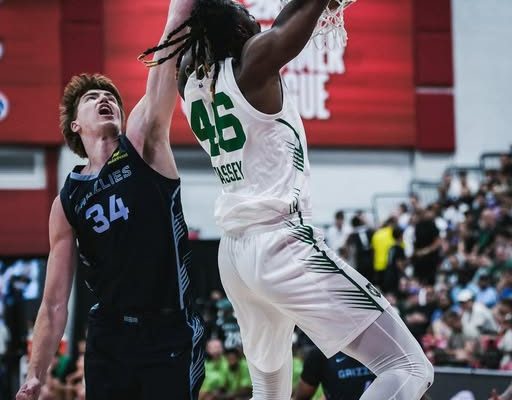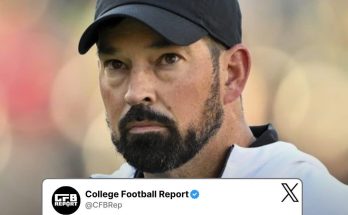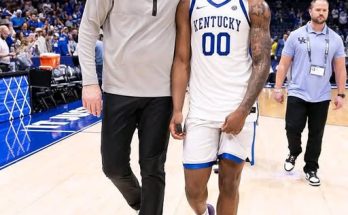According to league sources, the Boston Celtics have reportedly explored the idea of flipping Anfernee Simons’ \$27.7 million expiring contract in a potential trade scenario. The mere mention of Simons’ name being tied to the Celtics is intriguing on multiple fronts—not just because of the financial implications, but also because of what it signals about Boston’s front office mindset, their long-term cap strategy, and their unrelenting pursuit of championship sustainability. As fans, analysts, and rival teams turn their gaze toward the Celtics and their possible offseason maneuvers, the idea of moving Simons’ deal—whether as a trade centerpiece or a salary filler—touches on several core aspects of NBA team-building. Understanding these details requires diving deep into the mechanics of NBA contracts, player valuations, and strategic roster construction, particularly for a team that just lifted the Larry O’Brien trophy.
Anfernee Simons was acquired by the Celtics in a move that surprised many, given Boston’s already stacked perimeter rotation. As a combo guard with offensive upside and shot-creation ability, Simons brings a skill set that’s both valuable and slightly redundant on a team boasting Jayson Tatum, Jaylen Brown, Jrue Holiday, and Derrick White. From a pure basketball standpoint, Simons offers microwave scoring and pull-up shooting that would fit seamlessly into any second unit. But in Boston, where rotations tighten in the postseason and the margin for error is razor-thin, the overlap in skillsets has left some wondering about the long-term fit. That’s where the contract comes into play.
The \$27.7 million salary tied to Simons is not just a number—it’s a lever. In the current NBA, contracts near the \$20-30 million range are the gold standard for matching salaries in trades. They are expensive enough to match mid-to-high level stars and yet short-term enough to provide flexibility for teams seeking cap relief. That Simons is on an expiring contract adds even more value to Boston’s potential usage of it in trade talks. Expiring deals are attractive in their own right: teams looking to get off long-term commitments, cut luxury tax payments, or reset their books often welcome the idea of taking back a large salary that comes off the books in just a year.
Boston’s front office, led by Brad Stevens, has shown itself to be shrewd, calculated, and, most importantly, proactive. The Celtics have not waited for windows to close before adapting. They’ve extended their core when necessary, flipped key contributors like Marcus Smart when the time was right, and demonstrated a deep understanding of how to balance locker room culture with on-court performance. The reported willingness to explore flipping Simons is simply an extension of that strategic flexibility. It doesn’t mean Simons has failed in Boston. In fact, by all accounts, he’s been a professional presence, performed well in his limited opportunities, and shown flashes of being a high-impact scorer. But in the modern NBA, roster construction is as much about fit and finance as it is about talent.
At the heart of the Celtics’ decision to consider trading Simons is the looming impact of the NBA’s new Collective Bargaining Agreement (CBA). The 2023 CBA introduced a second luxury tax apron—an even more punitive financial threshold designed to discourage teams from spending with reckless abandon. Teams like the Celtics, who already operate well into the luxury tax zone, are at risk of triggering severe penalties if they don’t begin trimming future salary commitments. These penalties don’t just include fines or tax payments. They involve real operational restrictions: loss of mid-level exceptions, restrictions on aggregating salaries in trades, the inability to sign buyout players, and more.
Therefore, Simons’ \$27.7 million expiring deal is potentially one of Boston’s last chances to get creative in the trade market without taking a step backward. Instead of letting the contract expire and getting nothing in return, Stevens and the front office might be trying to turn that asset into something more future-proof—either a young talent under team control or a rotation piece locked in on a team-friendly contract. It’s an idea grounded in both basketball logic and financial prudence.
Another dimension to consider is the internal growth and positional redundancy Boston is currently managing. Derrick White has emerged as not only a top-tier defender but also an improved offensive initiator. His new extension confirms the organization’s trust in him as part of their core. Jrue Holiday, despite being older, remains a defensive anchor and respected locker room leader. With Payton Pritchard also finding his rhythm and carving out consistent minutes, there’s a clear logjam in the backcourt. It’s not that Simons is unwanted—it’s that his role might be too limited in Boston’s current structure to justify that price tag, even for just one season.
Simons, meanwhile, still holds real value around the league. At 25 years old, he’s entering his prime with career averages trending upward, particularly in scoring and playmaking. In Portland, he proved capable of filling the shoes of primary scoring guard during Lillard’s absences. His shooting splits—especially from deep—are eye-catching, and his ball-handling makes him a legitimate offensive engine in the right system. For teams on the rise or franchises looking for young, plug-and-play scoring talent, Simons is more than just a trade filler—he’s a potential starter or sixth man with star upside.
So which teams might engage Boston in conversations involving Simons? The list is longer than one might expect. For starters, the San Antonio Spurs are reportedly in the market for backcourt talent to pair with Victor Wembanyama. Simons could thrive in an up-tempo system that needs spacing and creation. The Orlando Magic, despite their young core, still lack perimeter shooting and shot creation; Simons would address both needs. The Utah Jazz have a glut of forwards and draft picks, but a backcourt scoring threat could be what takes them to the next level. In all of these cases, Boston could swap Simons for a piece that fits a positional need—perhaps a stretch forward, a backup big man, or draft capital that could be used later.
Even rebuilding teams like the Washington Wizards or Charlotte Hornets might get involved, not because they need Simons long-term, but because they could extract value from a larger, multi-team deal. Boston has already shown comfort engaging in complicated, multi-party negotiations. Packaging Simons’ contract in a deal involving draft picks, veterans, or even international stash prospects could yield a result that positions the Celtics to maintain flexibility while staying competitive.
Of course, the danger in flipping a player like Simons lies in opportunity cost. There is always a chance that Simons breaks out—either in Boston or somewhere else. Trading him before that breakout might mean selling low, a cardinal sin in asset management. On the flip side, keeping him with no real path to major minutes risks letting a valuable contract expire unused. The Celtics have to navigate that tightrope carefully, understanding both Simons’ present value and his future potential—while also keeping their books balanced and their championship window wide open.
Furthermore, the optics of any trade matter—especially for a team with title expectations. Trading away a player perceived as talented could disrupt locker room dynamics, even subtly. Though Boston’s locker room is known for its maturity and professionalism, any major move invites scrutiny. Stevens and the Celtics’ leadership have built enough credibility to handle that pressure, but it doesn’t make the decision any easier. Every action sends a message—to the roster, to the league, and to the fan base. If the Celtics do flip Simons, it has to be for a return that either boosts the team immediately or sets them up for sustained dominance.
Interestingly, the decision also ties into the team’s philosophy on development. Over the past few seasons, Boston has shown a greater willingness to invest in veterans rather than rolling the dice on young talent. Their player development pipeline has slowed in favor of acquiring known commodities, which makes sense when competing for titles. However, Simons exists in the gray area between both. He’s not a raw prospect, nor a proven playoff performer. That ambiguity makes his situation unique—and more complicated.
The Celtics’ potential decision regarding Simons’ contract will also have a ripple effect on how other teams approach their own expiring deals. If Boston is able to successfully turn a large expiring contract into a tangible rotation piece or future flexibility, it could set a precedent. In recent years, we’ve seen teams struggle with asset management in these scenarios. Letting talent walk for nothing, or overpaying to retain players with unclear roles, often leads to long-term stagnation. Boston appears determined to avoid that fate.
From a fan perspective, there’s understandable curiosity and concern. Anfernee Simons is fun to watch, and the idea of him catching fire off the bench in a playoff game is undeniably appealing. But the Celtics are not operating on hope—they are executing a plan. And in that plan, every contract, every minute played, and every dollar spent must serve the ultimate goal: championship contention. If moving Simons helps extend that window by even a season, it’s a move worth exploring.
Ultimately, whether or not Boston trades Simons before or during the upcoming season will depend on a variety of shifting factors—market demand, injuries, player performance, and the evolution of the Eastern Conference landscape. But the fact that they are even considering such a move speaks volumes about the modern NBA ecosystem. It’s not just about assembling talent—it’s about optimizing every resource in pursuit of a title. And in that calculus, a \$27.7 million expiring contract is more than just a line item—it’s a chess piece in a grander strategy.
The next few months will reveal much about Boston’s intentions. Will they pull the trigger on a trade that reshapes their bench and further insulates their core? Or will they hold onto Simons as a break-glass-in-case-of-emergency scoring weapon? Either way, the Celtics are once again proving that even in the afterglow of a championship, there’s no room for complacency. The quest for greatness doesn’t pause in the offseason. And sometimes, the most important moves are the ones no one saw coming.



